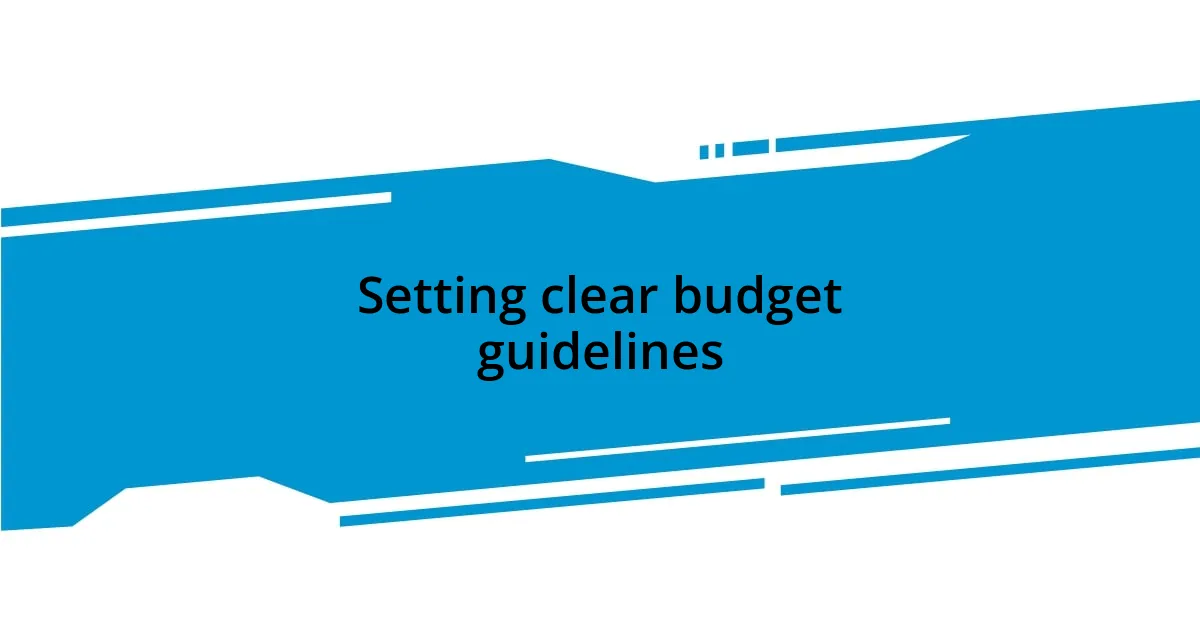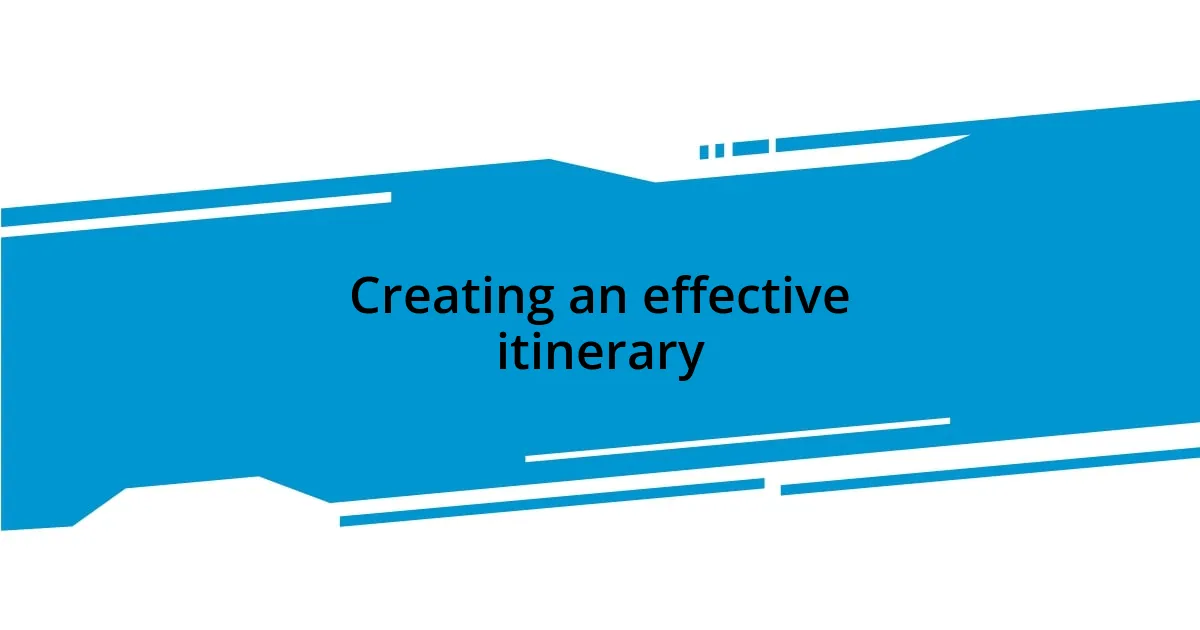Key takeaways:
- Understanding group dynamics is essential for tailoring event experiences, considering emotional tone and diverse needs.
- Setting clear budget guidelines fosters trust and aligns financial expectations, while a contingency fund helps manage unexpected costs.
- Effective communication, including group chats and regular updates, enhances engagement and participation among group members.
- Building rapport with service providers during negotiations can lead to better deals and a more collaborative event planning process.

Understanding group booking needs
When I think about group booking needs, I realize that each group’s dynamics can be so unique. For instance, I once helped plan a family reunion for over fifty relatives. It was enlightening to see how different ages and interests shaped the requirements; while some wanted activities that catered to younger kids, others were keen on gourmet dining experiences. This diversity taught me that understanding the various expectations within a group is crucial.
It’s not just about the basics like accommodations and transportation. I remember a corporate retreat I organized where the emphasis was on team-building exercises and relaxation. Recognizing that, I tailored the itinerary to blend work with fun, making sure there were ample opportunities for everyone to connect personally. How often do we consider that balance in our planning? It’s a vital aspect that can significantly impact the group’s overall experience.
Ultimately, the emotional tone of any group gathering matters immensely. I always make sure to connect with the group’s key decision-makers to grasp their vision—what do they want everyone to feel when they’re together? For instance, during a friend’s wedding planning, we wanted to create a joyful, inclusive atmosphere. That intention crafted the whole event, from seating arrangements to entertainment choices. Isn’t it fascinating how the right insights can transform a simple gathering into a memorable occasion?

Setting clear budget guidelines
Setting clear budget guidelines is essential for successfully managing large groups. From my experience, one of the first steps is to have an open dialogue about financial expectations. I once organized a sports team tournament where the budget ranged widely among participants. Some parents were comfortable spending more for added amenities, while others preferred to keep costs minimal. Having a transparent budget discussion upfront helped align everyone’s expectations and create a plan everyone felt good about.
During another event planning for a charity gala, we faced a budget crunch that could have derailed the evening. By clearly outlining our financial limits and prioritizing key areas—like venue and food—everyone involved was able to contribute ideas that fit our budget constraints. It was inspiring to witness how collaboration led to creative solutions, allowing us to host a stunning event without exceeding our financial limits.
Finally, I recommend having a contingency budget. Unexpected expenses can pop up, as I learned during an outdoor gathering when unseasonable weather forced us to secure tents at the last minute. Having some reserves made those last-minute decisions much less stressful. Remember, setting clear budget guidelines not only supports planning but also fosters trust among group members.
| Aspect | Budget Guidelines |
|---|---|
| Initial Budget Discussion | Align expectations early to avoid conflicts later. |
| Prioritize Expenditures | Focus on essential needs first, find creative solutions for extras. |
| Contingency Fund | Prepare for unexpected costs to maintain peace of mind. |

Researching suitable venues
Researching venues is a pivotal part of planning for large groups, and it’s where the creative process begins. When I was tasked with organizing a multi-day conference last year, I spent dedicated time exploring potential locations that could accommodate our unique needs. I visited various venues, each offering distinct atmospheres, amenities, and logistical considerations. The experience underscored the importance of visualizing how each space would influence the overall feel of the event.
Here are some key factors to consider when researching suitable venues:
- Capacity and Layout: Ensure the space can comfortably accommodate your group size, with flexible arrangements to support different activities.
- Accessibility: Check accessibility options for all attendees, from parking to entering the venue.
- Technology Needs: Confirm the availability of necessary tech, such as AV equipment and Wi-Fi.
- Ambiance and Style: Choose a venue that aligns with the overall theme or tone you want to convey, as this can enhance the emotional experience.
- Catering Options: Explore in-house catering or nearby catering services to manage food needs effectively.
One venue I visited had a garden space that was perfect for both formal meetings and informal networking, creating a vibe that was both inviting and sophisticated. It was insightful to see how the surroundings could shape interactions, making me realize the venue is more than a backdrop—it’s a catalyst for connection.

Creating an effective itinerary
Creating an effective itinerary is all about balancing structure with flexibility. When I planned a family reunion last summer, I made sure to lay out a detailed daily schedule, including meal times and activities. Yet, I was careful to build in some downtime, allowing for spontaneous moments—like a spontaneous bonfire that led to sharing stories and laughter. Have you ever noticed how the best memories often come from unplanned experiences?
In another instance, while organizing an annual team-building retreat, I learned the value of involving participants in the itinerary creation process. I sent out a quick survey asking what activities everyone was most excited about. The result? A blend of team sports, educational workshops, and relaxation time. By incorporating input from attendees, not only did I foster a sense of ownership, but I also created an itinerary that truly resonated with the group’s interests.
Lastly, I discovered the power of clear communication in an itinerary. For a large community event, I created a shared online document detailing times, locations, and responsibilities. It was incredible to see how this simple tool kept everyone on the same page and helped to avert confusion. Reflecting on that experience, I realized: having a well-crafted itinerary is not just about organizing events; it’s about enhancing the overall experience for everyone involved.

Communicating with group members
Communicating effectively with group members is a cornerstone of successful large-group planning. In my experience, setting up a dedicated group chat can work wonders. When I organized a workshop for a diverse group, we exchanged ideas and preferences in real-time, which not only streamlined communication but also fostered a sense of camaraderie. Have you ever noticed how quick interactions can transform impersonal conversations into something much more engaging?
Regular updates are equally important. During a multi-day retreat I organized, I made it a point to send out weekly emails that highlighted key information, upcoming deadlines, and any changes. This consistency kept everyone on the same page and calmed any potential anxieties. I remember one participant mentioning how reassuring it felt to know what to expect; it made them feel included in the planning process, which is essential when coordinating large groups.
Lastly, I believe in the power of open invitations for feedback. After I finalized the details for a corporate team event, I sent out a simple survey to gather thoughts. The results not only surprised me but showed how valued each person felt when their opinions mattered. Learning to embrace that open dialogue is an ongoing journey, but it’s fascinating how a few sincere questions can solidify connections within the group, creating a more engaged and participatory atmosphere.

Negotiating with service providers
When negotiating with service providers, I’ve learned that clarity is key. I vividly remember debating rates for a venue for a large family gathering. I came prepared with research on similar spaces, which armed me with confidence. Think about it: understanding market rates doesn’t just give you a stronger position; it also helps you to communicate more effectively.
Emotions can play a big role here too. During one negotiation for catering services, I sensed that the provider was genuinely passionate about their food. I mentioned how I wanted to create a unique experience rather than just a meal. The moment I tailored the conversation to the shared goal of delivering something special, I noticed a shift—not only did the price become more flexible, but we also collaborated on a custom menu. Isn’t it fascinating how establishing a connection can enhance the whole process?
Another strategy that has worked wonders for me is establishing a friendship with the service provider. For instance, when I was booking a charter bus for a weekend retreat, I spent time discussing their experiences and insights about the local area. This rapport led to a friendly give-and-take, where they were more willing to accommodate our needs and provide excellent upgrades at no charge. It makes you wonder, how many amazing deals never get offered simply because we forget to connect on a personal level?

Finalizing and confirming arrangements
Finalizing details after all the planning can feel like a weight off your shoulders. I remember the last time I wrapped up arrangements for a large retreat; it was a thrill to confirm dates and finalize room bookings. I actually double-checked everything once more, just for peace of mind, because nothing feels better than having all the elements locked in place.
Once that confirmation happens, I always send out a recap to the group. It’s more than just confirming details; it’s an opportunity to reignite excitement. In one exchange, seeing everyone’s replies filled with excitement made me realize how much they were anticipating the event. Do you ever wonder how a simple recap can uplift the entire group’s mood?
There’s something deeply satisfying about reaching out to service providers to give them the final go-ahead on everything. While I was finalizing arrangements for a recent conference, I took a moment to express gratitude for their efforts and attention to our needs. That personal touch opened the door for last-minute enhancements that I hadn’t even asked for. Isn’t it interesting how a little appreciation can lead to unexpected surprises in your planning process?
















